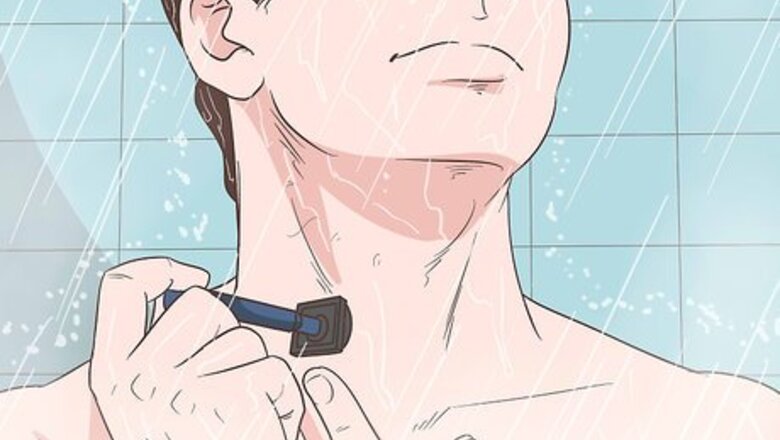
views
X
Trustworthy Source
Mayo Clinic
Educational website from one of the world's leading hospitals
Go to source
Preventing ingrown hairs on your neck is similar to doing so on your face – use good shaving techniques, keep your skin clean with daily hygiene practices, or consider alternatives to shaving.
Altering Your Shaving Habits

Shave in a warm shower. Keep your skin nice and wet when you shave – shaving with dry hair is more likely to cause skin irritation and ingrown hairs. Shave in the shower to keep your skin moist the whole time. The warm water will also help soften your hair.
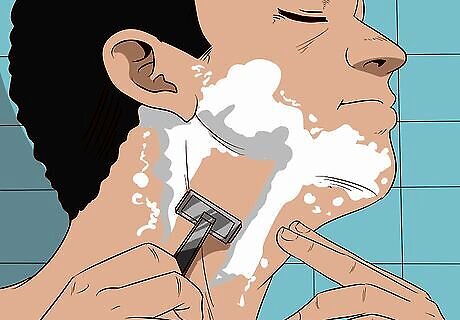
Use shaving gel every time you shave. Never dry-shave – your skin should be moist and lubricated when you shave. Lather up with a rich shave gel or cream to protect your skin. Use products that are fragrance-free and non-comedogenic (won’t clog pore) if you have sensitive skin. Apply the cream or gel five minutes before shaving to soften up the hair.
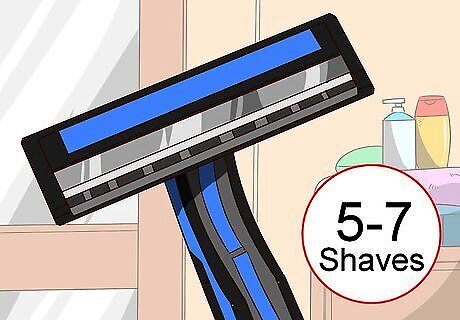
Use a razor with a single blade. Shaving cuts hairs short and makes them sharp – that’s why it’s easy for them to turn back in on themselves, pierce the skin, and become ingrown. Use a razor with a single blade instead of multiple blades so that the hairs aren’t quite as short or sharp. Replace your razor blades every 5-7 shaves so that they stay clean and sharp. Always rinse your razor when you’re done shaving to get soap and hairs off of it.
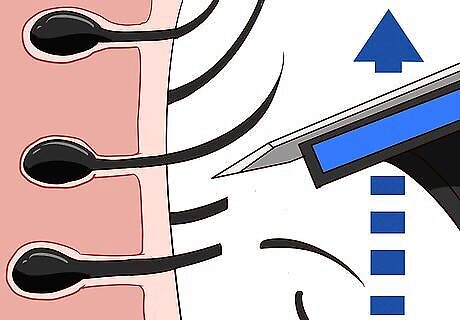
Shave in the direction of hair growth. Shave with, not against, the grain of your hair. This prevents hair from being cut too short and irritating your skin, and decreases the likelihood of ingrown hairs.
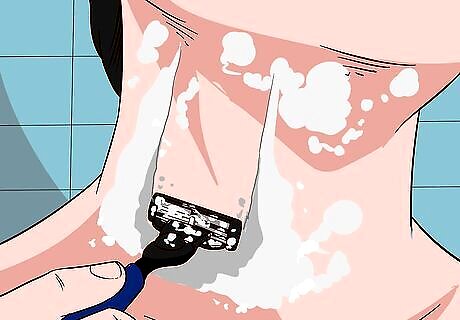
Shave each area only once. Do not shave the same area of skin over and over again. This can irritate your skin and cut the hairs very short, possibly resulting in more ingrown hairs. Shave over an area one time only. Using a high-quality, lubricating shave gel can help make this more effective.
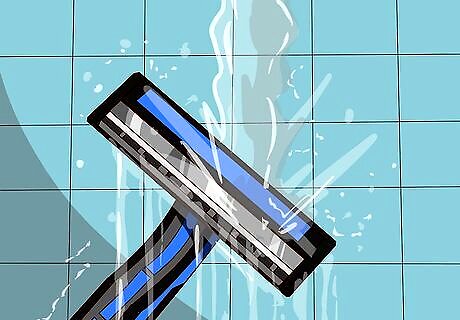
Rinse the razor blade after every stroke. It may seem tedious, but take the time to rinse off your blade after every stroke you make. This will keep your blade cleaner and produce a more even, less irritating shave.
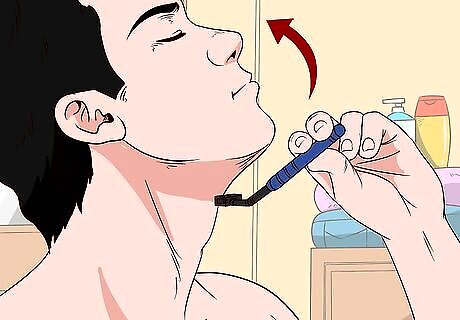
Keep your skin naturally loose when you shave. Don’t pull your skin taut while you shave over it. This can let the hair follicle slip back under the skin. It may take some practice, but work on shaving your neck without pulling on your skin. Lift and move your chin and jaw to different angles to get those hard-to-reach places.
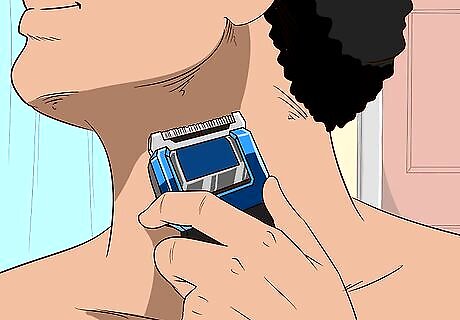
Use an electric razor. Electric razors do not give you as close of a shave as razor blades do. Because they don’t cut the hair as short, electric razors may be less likely to cause ingrown hairs. Consider trying one out to see if it helps. You can also use a clipper or beard trimmer. These often allow you to choose what closeness setting you want. Avoid using the shortest setting.
Keeping Your Skin Healthy to Prevent Ingrown Hairs
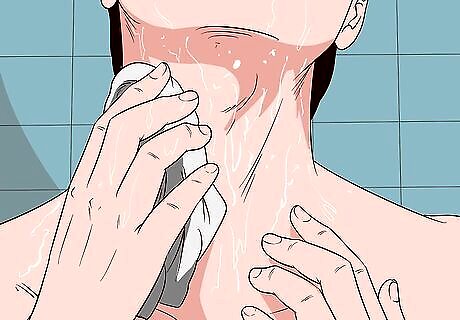
Wash your neck like you wash your face. It’s easy to forget about washing the skin of your neck if you’re focused on tending to your face. However, include your neck in your regular hygiene process. It can improve your skin and help prevent ingrown hairs. Use the same cleanser on your neck that you use on your face – a mild and non-comedogenic cleanser is best for daily use, as bar soap can dry out your skin.

Exfoliate your neck. Scrub away dead skin and dirt by exfoliating your neck on a weekly basis. This will help prevent ingrown hairs by clearing out your pores. Lather up a clean washcloth in the shower and gently scrub the skin of your neck, using small circular motions. Rinse off with warm water. For the best effect, use a product that contains tretinoin (for instance, Renova or Retin-A) to clear away dead skin cells. You can also use an exfoliating loofah or sponge, or an exfoliating facial product on your neck. If you have oily or acne-prone skin, lather up with a cleanser that contains salicylic acid or beta hydroxy acid to unclog your pores. Alpha hydroxy acids are also effective chemical exfoliators. If you have sensitive or dry skin, avoid these products and consult with your doctor regarding the best exfoliation method for your skin type.
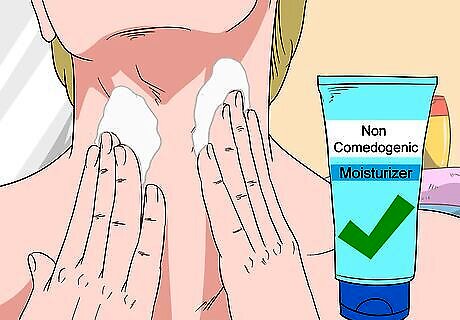
Use moisturizer on your neck. Get a gentle, non-comedogenic moisturizer – the kind that won’t clog your pores. Having smooth, soft skin may help prevent ingrown hairs. Use moisturizer daily after you wash your neck. Apply moisturizing lotion while your skin is still damp to best trap moisture in your skin.

Wear loose-necked shirts. Constantly wearing collared shirts, ties, or scarves can rub against your skin and cause irritation. Try wearing collarless shirts for a while to let your skin calm down. Stick to outfits that don’t rub on the skin of your neck, if possible.
Dealing with Ingrown Hairs in Alternative Ways
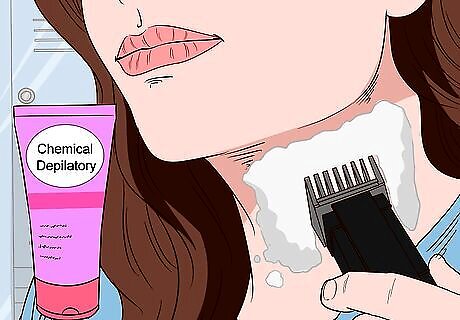
Try a chemical depilatory. Cream-based hair removers like Nair are available at most pharmacies or drug stores. Try out a chemical hair remover on a small area to make sure it doesn’t irritate your skin or cause a reaction. Use it as directed on the label. Like shaving, using a cream allows you to manipulate the area you want cleared of hair. You can use a depilatory cream on your neck and still maintain a beard on your face, if you want to.
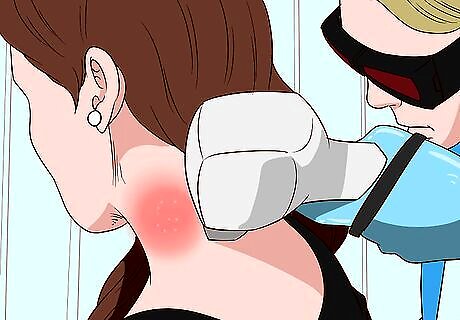
Get laser hair removal. For a longer lasting solution, have your neck hairs removed with laser treatments. You’ll need between 2 and 6 treatments to be free of unwanted hair. Laser treatments last several months, and can be repeated when you notice hair growing back in.

Stop shaving. Stop shaving altogether if you have ingrown hairs – let the condition improve before shaving again. The same goes for waxing or plucking. Guys, consider growing a beard and using a trimmer to manicure your neck hair!
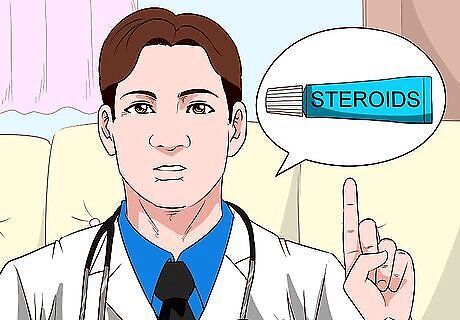
See your doctor for prescription steroid cream. If you continue to struggle with ingrown hairs on your neck, see your doctor or dermatologist. They can prescribe you a medicated steroid cream to apply to your skin to help reduce inflammation.



















Comments
0 comment